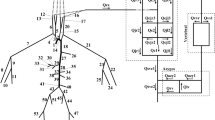Abstract
To explain consistently determining the global shape of the brain, the vortex model of the brain was proposed by Nakada. He explained that structural organization of the brain is guided by the self-organization pattern based on the principal rule of free thermal convection. In the present study, a computer simulation of a simple thermal-driven convective-diffusive flow was performed to clarify the fundamental relation between this type of the flow and formation of the brain shape. The incompressible Navier-Stokes equations containing the external force dependent on temperature, and an equation for temperature were solved with projection method. The multi-directional finite-difference method was employed to discretize the governing equations. Computational results were suitably visualized and found to be consistent with the arguments in the vortex theory that the thermal-driven convective-diffusive flow is an essential mechanism for determining the global shape of the human brain.
Similar content being viewed by others
References
Bloom, F. E., Lazerson, A. and Nelson C., Brain, Mind and Behavior, (2001), Worth Publishers, New York.
Chorin, A. J., Math. Comp. 22 (1968), 745.
Kawamura, T. and Kuwahara, K., Computation of High Reynolds Number Flow around a Circular Cylinder with Surface Roughness, AIAA paper, 84–0340, (1984).
Komurasaki, S., Kawamura, T. and Kuwahara, K., Simulation of Thermal Convection in a Stratified Fluid Flow, AIAA paper, 2002–0877, (2002).
Kuwahara, K., Computation of Thermal Convection with a Large Temperature Difference, Proc. International Conf. An Applied Numerical Modeling, (1984).
Kuwahara, K., Unsteady Flow Simulation and Its Visualization, AIAA paper, 99–3405, (1999).
Mai, J. K., Assheuer, J. and Paxinos G., Atlas of the Human Brain, (2004), Elsevier Academic Press.
Meegama, R. G. N. and Rajapalse, J. C., NURBS-Based Visualization of Age-Related Diversity in Cortical Morphology, Journal of Visualization, 9-1(2006), 9–11.
Nakada, T., Free convection schema defines the shape of the human brain: brain and self-organization, Medical Hypotheses, 60-2 (2003), 159–164.
Takami, H. and Kuwahara, K., Numerical Study of Three-Dimensional Flow within a Cubic Cavity, Journal of Physical Society of Japan, 37-6 (1974), 1695.
Author information
Authors and Affiliations
Additional information
Satoko Komurasaki: She received her M.Sc. (Informatics) in 1998 from Ochanomizu University. She also received her D.Sc. (Informatics) in 2002 from Ochanomizu University. She works at College of Science and Technology, Nihon University since 1999. She currently is a lecturer. Her research interests are flow simulations of thermal convection and other high Reynolds number flows, and visualization of computational results with using computer graphics.
Kunio Kuwahara: He received his D.Sc. (Physics) in 1975 from University of Tokyo. He worked as an assistant professor at University of Tokyo and as a NRC senior research associate in NASA Ames Research Center. He then worked as an associate professor in Institute of Space and Astronautical Science, JAXA until 2006, after his retirement, he became a president, CEO in Institute of Computational Fluid Dynamics. He received Award, Japan Society of Automobile Engineers (1992), Award, JSME (1992), Computational Mechanics Achievement Award, JSME (1993) and Max Planck Research Award (1993). His research interests are problems in computational fluid dynamics.
Rights and permissions
About this article
Cite this article
Komurasaki, S., Kuwahara, K. Simulation of a convective flow forming a pattern of the human brain. J Vis 11, 197–204 (2008). https://doi.org/10.1007/BF03181707
Received:
Revised:
Issue Date:
DOI: https://doi.org/10.1007/BF03181707



